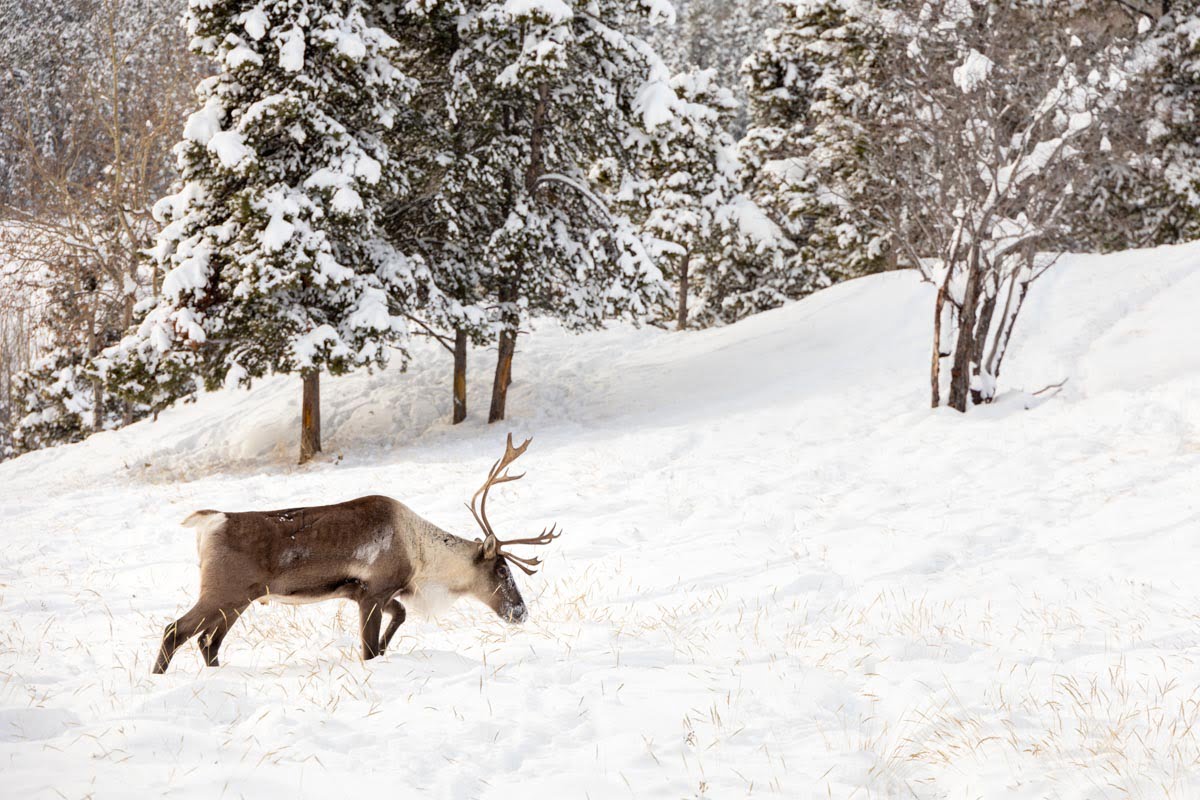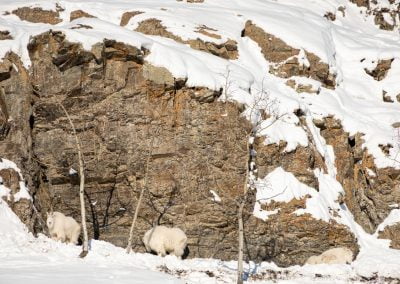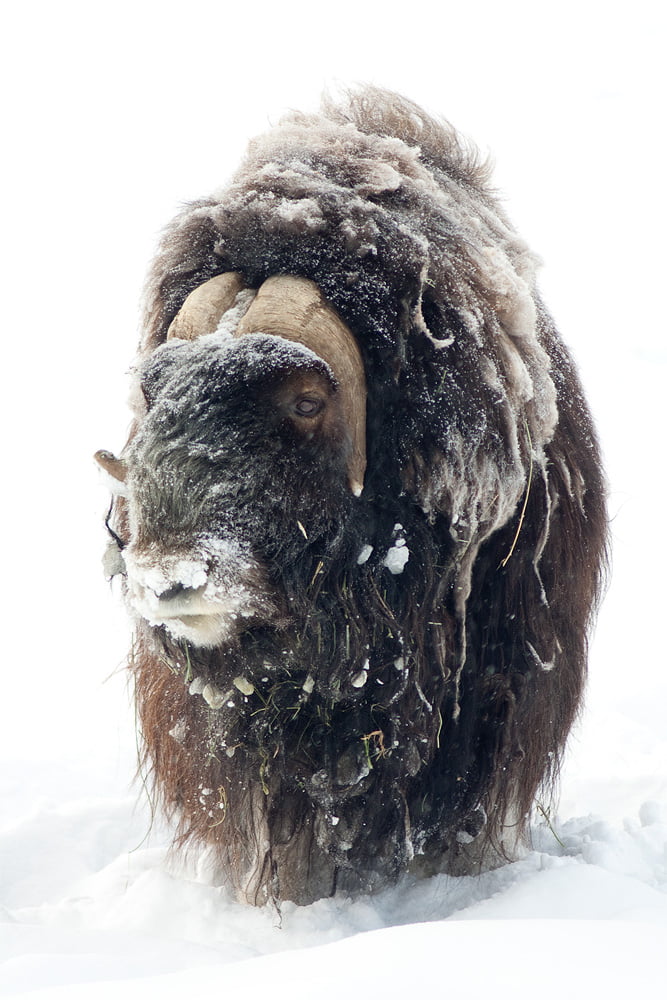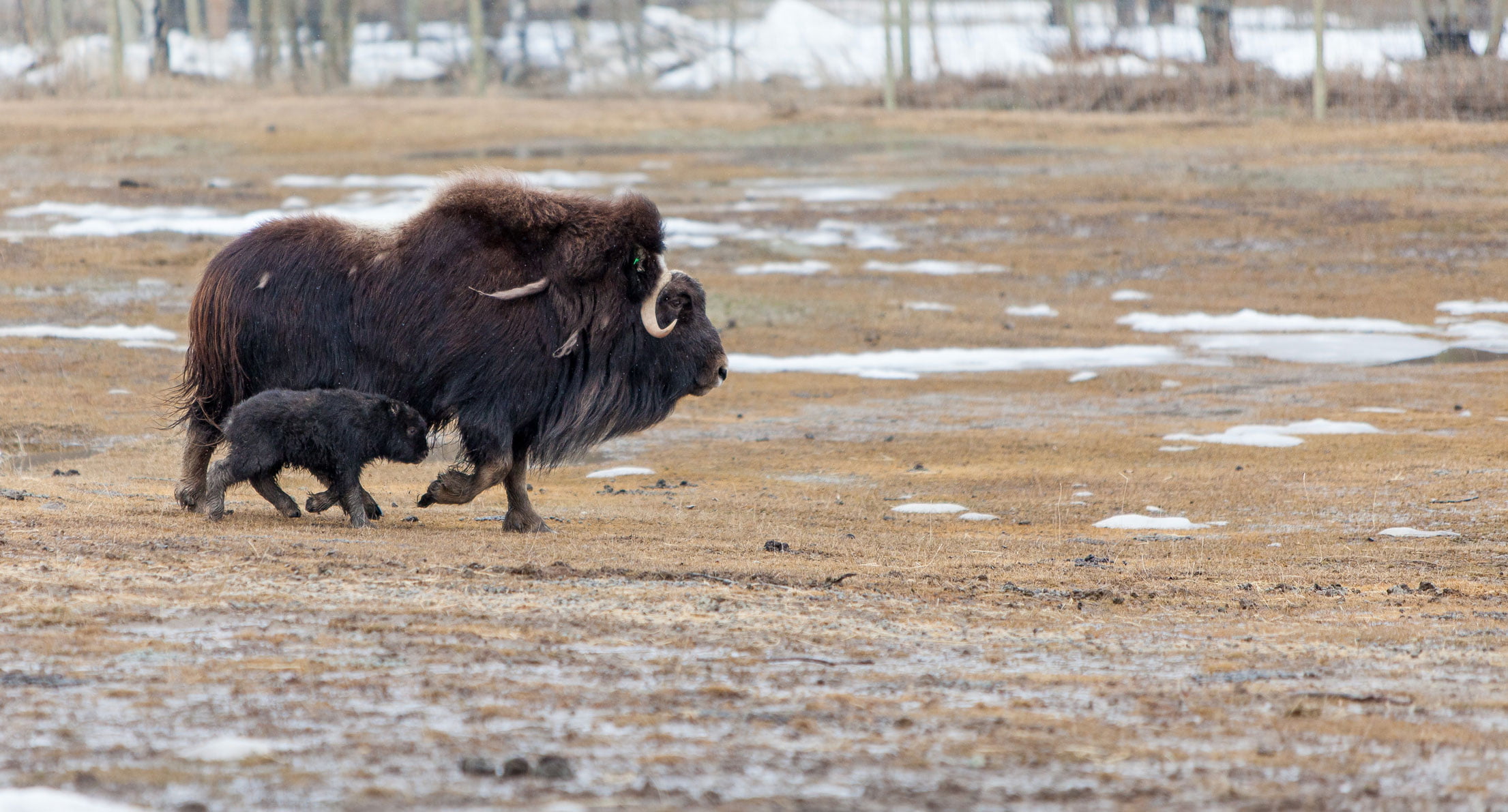
The Animals are Quite Fine Outside
The Animals are Quite Fine Outside
5 minute read –
After a beautiful, drawn out fall (by Yukon standards), winter arrived in force at the end of October 2020. Record setting snowfall on November 2nd 2020 kicked winter into full gear. Shutdowns were widespread (including here at the Preserve). It was snow joke!
Now that we’ve dug ourselves out, we can offer winter wildlife viewing at its finest! Without leaves on the trees and a beautiful white backdrop, its easier to spot the animals (although the Arctic Foxes can be a bit tricky with their white winter coat). It is especially satisfying to watch animals in their element.
We sometimes get asked if we bring them inside when it gets cold. Apart from the obvious challenges of convincing the Mountain Goats to come down off their cliff, I think they all might get a little hot if they had to be inside. I don’t even want to think about “musk”ox in an enclosed space. And the Bison probably wouldn’t listen to us, even if we asked nicely. Anyway.
They are quite fine outdoors. If you’re not convinced, I give you:
Exhibit A: Muskox and Caribou
Muskox and Caribou were wandering around with mammoths on the Beringian steppes during the last ice age. (For better or for worse, the giant beavers didn’t make it). The Preserve’s other ice age animal (and unofficial 13th species) the ground squirrel is much more sensible. They are currently napping right now instead trying to eat each other. While there’s been a lot of snow so far, it’s probably not as much as they had last ice age.

Exhibit B: Arctic Foxes.
They also get around the north (quite fine, thank you very much). Incidentally, they may be illegally immigrating into Canada from Norway. This is probably because they are the bomb. By which I mean “Among mammals, the arctic fox has the best insulative fur of all.” In the same paper, they also note that Arctic Foxes don’t start shivering until somewhere below -40c. They’re not quite sure how cold it needs to get, because the scientists that tried, “…did not succeed, because they did not have the necessary equipment available to reach sufficiently low ambient temperatures.”

This Arctic Fox is not only warm, but also enjoying a pumpkin filled with meat treat. No tricks here.
Exhibit C: Mule Deer.
Now stay with me. I realize I’m skipping past a few animals to get to what is arguably the least “winterized” animal at the Preserve. Their large ears and delicate hooves say “I’m new here”. And that’s true – they were first sighted in the Yukon in the 1930s and 40s.
What’s so remarkable about Mule Deer is just how wide a range they now have. Several years ago I was camping in the dessert outside Phoenix, Arizona. And believe it or not, there were Mule Deer wandering around between the prickly pear cactuses! Meanwhile they are now seen as far North as Dawson City, Yukon!! They are simply remarkable animals (Rebecca will back me up on this) that deserve a lot more credit than they get.
And finally,
Exhibit D: Humans
It’s really just us that get hung up about the cold. Last January I had an excellent opportunity to to make a questionable life choice and strip down to a thin long-sleeve shirt while standing beside a caribou at -35c. I decided to leave my pants on as well as my long underwear not to mention my wool snow pants. Even so, it was quite cold. Painfully cold. Luckily Josh Robertson, a PHD student studying animals with thermal cameras had his camera handy:
The bright yellow bits in the second image are all my heat escaping out into the atmosphere. The caribou is busy eating and clearly doesn’t care. (If you found this foray into thermal imaging unsatisfyingly brief, you’re in luck, we’ve got more on this in the works)!
The animals have got this.
If you haven’t experienced these Yukon species in their element, I highly recommend a trip to the Preserve. If you’re worried about the cold I recommend:
- Walking (shivering is a metabolic way of warming your core temperature, but walking is a way more effective).
- Bring some snacks (to fuel your internal furnace).
- Wear warm clothes (and you know… maybe don’t strip down to pose with animals). Soft soled boots keep your feet flexing and therefore warm. A warm hat keeps the heat from leaking out the top.
I got around a couple days ago and took a few photos to give you a taste of what you’re missing out on! Click for bigger versions – and see if you can find any of the Preserve’s bigger “cats”.

Jake Paleczny
Executive Director
Jake Paleczny is passionate about interpretation and education. He gained his interpretative expertise from a decade of work in Ontario’s provincial parks in addition to a Masters in Museum Studies from the University of Toronto. His interests also extend into the artistic realm, with a Bachelor of Music from the University of Western Ontario and extensive experience in galleries and museums.




























